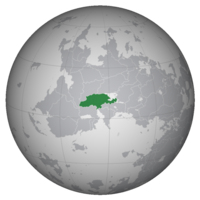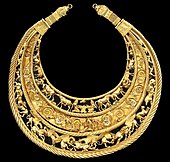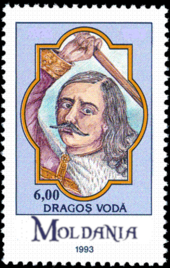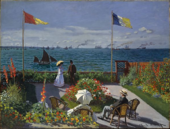Moldanovica
Republic of Moldanovica | |
|---|---|
| Motto: "Stragosten ine rein muncă" "Love comes through work" | |
| Anthem: Oda la Moldanovica | |
 Location of Moldanovica on Thuadia | |
| Capital and city | Sopava |
| Official languages | Moldanian |
| Ethnic groups (2012)National Census | see here
|
| Demonym(s) | Moldanian |
| Government | Unitary parliamentary constitutional monarchy |
• Monarch | Cristina II |
• Prime-Minister | Maximilian Mocanu |
| Legislature | Parliament |
| House of Domnci | |
| The Comunnes | |
| Area | |
• | 1,369,907 km2 (528,924 sq mi) |
| Population | |
• 2021 estimate | 48,551,234 |
• 2012 census | 48,320,329 |
| GDP (PPP) | 2021 estimate |
• Total | 471.13 Billion ACU (376.17 Billion SEK) |
• Per capita | 9,704 ACU (7,748 SEK) |
| GDP (nominal) | 2021 estimate |
• Total | 561.45 Billion ACU (448.29 Billion SEK) |
• Per capita | 11,564 ACU (9,233 SEK) |
| Gini (2020) | 33.6 medium |
| HDI (2020) | 0.828 very high |
| Currency | ᕋ Sekinar (SEK) |
| Time zone | -7 (West), -6 (East) |
| Date format | dd/mm/yy |
| Driving side | right |
| Calling code | +71 |
| Internet TLD | .md |
Moldanovica (/moʊldænoʊvɪkə/ listen, EPR: Mold-an-Ovica, Moldanian: Moldânia; Often simply reffered to as Moldania)[1] is a country in the crossroads of central Thuadia, bordered by Tiskaiya to the west, Kentalis and Torvon to the south, Fichmanistan to the west and Landinoso and Chernogovsk to the north. Moldanovica has a large population, around 48 million people, a mixture of ethnic Moldanians, Torvonese, Tiskaiyans and Kentalians. Moldanovica's capital city is Sopava, with other large metropolitan areas including; Bălrobia, Derazhchiv and Cachia. The climate is mostly temperate, fertile fields and a total area of 1,369,907km2. The Terrendover Mountains stretch across the southern border with Torvon, forming Moldanovica's highest point, Romenau Peak (3,130m). The River Mouldan runs from the western-most point of the country to the Sopava Province to the central great plains.
Moldanovica is a unitary parliamentary democracy and constitutional monarchy [2].The monarch, Queen Cristina II, has reigned since 1973. The current Prime-Minister of Moldanovica is Maximilian Mocanu, who has been in office since 2017, with the general elections set to be held in 2022.
Moldanovica historically has been inhabited and settled by many small nations and micro-powers. The first notable one being the Tiskai-Moldanian United Kingdom, which existed from 970 to 1048, when the Principality of Mouldania was established by Voivode Dragoș when he declared it independent from the United Kingdom. The Principality existed throughout almost a thousand years, before the Republic of Moldanovica was established because of the Book of Parliament in 1883.
Moldanovica is a member of several international organisations such as the World Assembly and the Sekidean Union, specifically the Inner Sector of nations. The nation it's the closest ties to Torvon, Kentalis, Tiskaiya and Hondonia, for cultural and historic reasons.
Etymology
The name 'Moldanovica' originates from the native name 'Moldania' or 'Mouldania' which originates from the River Mouldan that flows through the central plains of Moldanovica and was at the centre of power when Moldanovica united as the Principality of Mouldania in 1048. In accordance to legend, the river was named after a dog owned by Voivode Dragoș I named Moulda[3] who drowned in the river while hunting bison. The dogs name was given to the river, which extended to the Principality[4].
Moldanovica is one of very few nations which goes officially by two different names, the Republic of Moldanovica and the Republic of Moldania. The more common name for the nation, however, is Moldania despite it rarely being used in official documentation.
History
Early History

Early human remains near the village of Prevoda in the province of Roumania date back as far as 8,000 years ago and represent some of the oldest known samples of homo sapien life on continental Thuadia. By 4,500 BC, the Neolithic Mucuteni–Typillia culture was flourishing in wide areas of modern Moldanovica due to the lush, flat and fertile lands. Areas with evidence of these civilisations include the Terrendover Mountains, Roumania and the surrounding areas of Sopava. The most well known event of the period in Moldania was the believed first Thuadian domestication of the horse, with evidence suggesting that Moldania was the first to do so on the continent.
During the iron age, the Samaritanian[5] people arrived to inhabit the great Moldanian plains, as well as other smaller ethnic groups including the early Tiskaiyan slavic groups as well as the Roumans.
From the 3rd century, Kental Slavs began to migrate into southern areas, such as the Cachian Province, forming the base for the modern Vetederavan group that exists in minority in the area to present day. By the 6th and 7th centuries, Moldanovica became a boiling pot of different tribes and groups due to it's location in central Thuadia as well as it's fertile plains. Such groups that co-existed include the early Moldanians, known as the Samaritanians, groups of Tiskaiyan slavs, especially in the Deraz and Leva provinces and the Constantine Peninsula, Kental slavs and even small populations of Senefpatians in the far west.
Evidence suggests fighting occurred between the Samaritanians and the Slavic tribes, which lead to both sides being worn down, leaving a power vacuum in the region. This lead to the emergance of Kental-originating Slavs as well as the spread of the Roumani people all throughout the southern regions. The Roumani People and the Samaritanians fought at the Battle of Florentia, which ended in a Samaritanian victory and displacement of the Roumani in 644.
Tiskai-Moldanian Period (970-1048)
In 970, the Tsar of Tiskaiya ventured west of his lands to conquer the Moldanian tribes that began to contest the ethnic Tiskaiyans on the Constantine Peninsula. In the 8 month conquest, beginning in January and ending in August, he successfully defeated the thirteen tribal kingdoms ruling most of Moldanovica's current lands. The young Tsar would go on to create the Tiskai-Moldanian United Kingdom. This partnership would last 78 years and somewhat thrive during his rule. Creating a united economy and social structure, leading to a mass Tiskai immigration from the dense lands of Tiskaiya to the relatively sparsely populated lands of Moldanovica. These Tiskaiyans would settle in the southeast of the country closest to their native land of Tiskaiya. To help bypass the language barrier between the early Moldanian language and Slavic language, the Tsar would allow each county to have certain freedoms regarding military, education, and other things to avoid confusion. It was only really in the southeast where early English languages were intertwined with Slavic ones. Due to the language barrier and high levels of local bureaucracy, a rivalry would grow in the late years of the Kingdom, becoming a contributing factor to the later war between the two regions.
While the difference in culture was massive, Moldanian tribes and Tiskaiyans shared a love of militarism and bonded cultures over jousting, duelling, and hunting activities. The combination of these two cultures resulted in a culmination of western and eastern technology and medicines, boosting the countries growth but also serving to hamper it.
While the Tiskai Tsar was benevolent and chivalrous to the Moldanian people, he was still a foreign ruler. He was not the most popular figure, even in newer generations of Moldanians, who had only known Tiskai leadership since birth. Even with the concessions made to Moldanovica by the Tsar, he never could remove the Moldanian spirit from the region, leading to harsh military reactions by the Tsar when Moldanians dissented against his rule and plead for a return of Moldanian independence.
Tiskai-Moldanian War
In 1000, the Tiskai Tsars wife gave birth to a child; this child would become heir to the throne of the United Kingdom. The very same month, one week later, another child would be born. This was the result of an affair the Tsar had had with a Moldanian servant. This son would be named Pavel or Dragoș (his Moldanian name). Both sons would grow up separated, and it wasn't until 1047 when their father told them the truth and introduced the half-brothers to each other. When the Tsar died in 1048, the Moldanian son sought to free Moldanovica from Tiskaiya. After rallying Moldanovican low-nobles under his rule, he declared Independence from Tiskaiya on May 11, 1048. The Recently crowned Tiskai Tsar would quickly retaliate by raising the much more organized Tiskai army. Over the next year, brutal fighting would occur between the brother's nations, leading to thousands of deaths. It wasn't until May 1st of 1049 when the conflict would end, and the Principality of Mouldania would be proclaimed.
During the year's worth of fighting, around 15,300 soldiers died, with a majority of casualties were mostly on the Moldanian side. A majority of those aforementioned casualties occurred at the battle of Fort Bezodnya. Fort Bezodnya was a major border fort along the Tiskaiya-Moldanovica border. Stationed near and around the fort was the Army of Oryshevsk, the largest army under Tiskai control. Early in the morning, Moldanian soldiers began to siege the fort. This siege would last 3 days before a major wall breach occurred and the soldiers were able to rush the fort's garrison.
Outside of the fort, the rest of the Moldanian army was fighting a deadly battle with Tiskai forces not keen to lose the fort. After nine hours of fighting the armies were forced to withdraw, but with Fort Bezodnya under Moldanian control. The next day an ambush on the fort was carried out by the Tiskai archers, who sent hundreds of arrows through the sky towards the patrolling soldiers. It wasn't long before the rest of the Tiskaiyan army came to battle with the Moldanian army, ill-prepared for such an early battle and late to the scene. For two hours the soldiers guarding the fort would hold out from Tiskai forces until armored soldiers under the leadership of Voivode Dragoș himself arrived to cut an opening for reinforcement into the fort and break through the Tiskai lines. For twelve hours the armies would fight for control well into the afternoon. Under Dragoș' leadership, the armored soldiers would drive out the Tiskaiyan troops from the forts surrounding area, and later a full Tiskai retreat would take place. After one week of camping out in the area surrounding the fort, the Tiskaiyan Tsar met with his brother to negotiate peace.
section written by Tiskaiya
Medieval Moldanovica
Principatul Timpuriu Period
Medieval history of Mouldania began with the writing of the Apocalips Book, which marked the beginning of official recorded history as well as marking each settlement in the nations borders at the time. The city of Sopava was founded in 1101 as the nations capital out of the ancient city of Ivăncești that was founded by the Samaritanians. At the same time the First Kingdom of Roumania was established in the the Terrendover Mountain Range and southern Moldania, founding Cachia as their capital city on the coast.
The Roumanian kingdom prevented Mouldania from reaching the ocean for trade and relations, which lead to Roumania being a stronger power as of them mid-14th century. The turnaround in powers was with the reign of Valerian, often known as Valerian the Bearded. During his reign, Valerian inspired reforms across Mouldania, as well as opening trade with former enemy Tiskaiya in 1466. As well as this, he was involved in the annexation of the short lived Derazchian Rus on the Abyssal Sea.
Golden Period
Renaissance Period
Technological Period
Coming out of the renaissance period, newly formed Moldanovica was looking to rapidly technologize after losing it's grip on it's empire in the century previous, with important colonies such as Hondonia gaining independence. Despite this, historians argue that Moldanovica had a moderately advanced military going into the 20th century. In 1902, Moldanovica finally let go of their last colonial holdings in the Veridian Islands in order to join an organisation on the come-up known as "The Alliance", which was made up of similarly democratic and anti-imperialist nations as many felt war was on the horizon.
In the same year, the Kingdom of Roumania, a sovereign state to Moldanovica's south, introduced a singularist government on top of their monarchy as well as making strides towards joining up with the Iron Pact, who were beginning to have tensions rise with the Alliance. As it became obvious that Roumania was planning to invade Moldanovica, they rapidly mobilised themselves on the border with Roumania. Prime-Minister Emmanuel Cojoc flew to Tiskaiya to request military aid and support, which was accepted and war was all but official as of 1904. Tensions had also began to rise between the Iron Pact and the Alliance and in 1905, when the war became official in Thuadia, the fighting between Roumania and Moldanovica began, with the two sides engaging in early trench warfare in what would be some of the worst fighting the war would see on the western front.
The Torvonese Empire began to send troops into Moldanovica through the port city of Cachia which had been captured by the Roumanians in early 1906.
Modern Period
Contemporary Period
Geography
Moldanovica is one of Thuadias largest countries by land mass, with 1,369,907 square kilometres (528,924 sq mi). A vast majority of the nation lies within the central great plains.
The landscape of Moldania consists mostly of fertile plains (or steppes) and plateaus, crossed by rivers such as the Mouldan and the Belododia as they flow east into the Black Sea and the smaller Sea of Azov. The delta of the River Grăşti makes up Moldanias border with Kentalis. Moldania's various regions are very diverse, ranging from the Terrendover Mountain Range and highlands of Roumania to the lowland region of Piechy and Sacalin.
The nation also has a number of highland regions such as the Terrendover Highlands (in the south) and the Dniesper Uplands (in the west). The snow melt from the mountains feeds the rivers and their waterfalls.
Significant amounts of natural resources exist in Moldania, naturally due to the nations scale, including wheatgrain, lithium, natural gases and timber. Despite this, the nation struggles in parts, such as water and air pollution. Another major problem for Moldania is the difficult distribution of clean drinking water in it's western regions, as it is typically more dry and arid than it's eastern counterpart.
Climate
Moldania has a majority temperate climate, with areas of the great central plains being counted as tropical savanna. In the same area, there is also a pocket of sub-tropical climate in the Alban Forest. The climate is influenced by the cold air from northern Thuadia, around the Sivuk Gulf, as well as warm air from the Laurentine Gulf. Average temperatures in the east range from 9-11.5°C, and in the west 13-15°C. Precipitation is highest in the western regions, providing for fertile farmlands in areas of the highest amount of precipitation per year. Rainfall levels are particularly high in the Terrendover Mountains, receives around 120 centimetres (47.2 in) of precipitation annually, while Sopava and the coastal areas of the Abyssal Sea receive around 40 centimetres (15.7 in).
Biodiversity
Moldania contains six terrestrial ecoregions: Central Thuadian Mixed Forests, Moldanian Forest Steppe, Pontic Steppe, Sub-Tropical Forest, Terrendover montane conifer forests and Temperate Savannah.
Politics
The nation is a parliamentary democracy under a constitutional monarchy, meaning the Prime-Minister is voted in by their party, which is voted in by the public, and act as Head of Government and the monarch acts as head of state. The power is relatively de-centralised with local regional governments existing within smaller areas. The Moldani government can carry out constitutional reform using Acts of Parliament, and thus has the political power to change or abolish almost any written or unwritten element of the constitution. No sitting parliament can pass laws that future parliaments cannot change.
The Parliament of Moldanovica is sovereign. It is made up of the Upper House, the Lower House and the Crown. The main business of parliament takes place in the two houses, but royal assent is required for a bill to become an act of parliament (law).
For general elections, (elections for the Lower House), Moldania is divided into 550 constituencies, each represented by a singular MH (Member of House). MH's can serve for up to 5 years, however can always be voted out in general elections. The Conservator, Poporului and Rouman National parties are the top three parties in the Lower House, respectively.
Foreign Relations
Moldanovica is a member of multiple international organisations such as the Anterian World Assembly, the Sekidean Union and also agree to the terms of the International Court. The historic region of Moldania, as well as it's need for trade were amongst the reasons for their joining of the Outer Sekidean Union on the 11th May 2005, on the same day as neighbouring Torvon. Historically Moldanovica has shared close relations with Torvon, as well as Tiskaiya following their war in 1049. Moldania also trades with all members of the union in some way.
Military
The Queen's Armed Forces consists of four main branches; the Royal Navy, Royal Marines, the Moldani Army as well as the Royal Airforce. The armed forces are managed by the Moldanian Ministry of Defence, which is lead by the Defence Minister and the Defence Council who advise the Minister. The Commander-in-Chief is the Monarch, who takes the Oath of Alleigance. The army is pledged to protect other members of the Sekidean Union, being ready to go into military conflict at any point.
As of 2021, Moldanovica is ranked 15th in global military power, spending around 20% of the GDP on military each year.
Administrative Regions
The country is made up of 12 administrative divisions, all which have at least 15 counties which have their own governing councils which make decisions on local levels. These divisions have been changed and updated many times since the establishment of the Republic of Moldanovica in 1883. Within these regions, there is a clear seperation of powers.
| Province | Capital | Governor | Chief Minister | Provinces | Area (km2) |
Population (2011) |
Density (people/km2) |
Human Development Index | Map |
|---|---|---|---|---|---|---|---|---|---|
| Sopava Province | Sopava | Craita Vlaicu | Beniamin Marandici | N/A | X | 11,334,230 | X | 0.817 | |
| Sollena Province | Solen | Ivan Cocis | Nandru Catargiu | N/A | X | 4,393,302 | X | 0.811 | |
| Piechy and Sacalin Province | Bălrobia | Tavian Maniu | Corina Butacu | N/A | X | 8,939,200 | X | 0.821 | |
| Leva Province | Leva | Cami Negutesco | Emanuel Hasdeu | N/A | X | 4,403,757 | X | 0.812 | |
| Deraz Province | Derazchia | Tereza Barbu | Cecilia Radu | N/A | X | 3,268,320 | X | 0.808 | |
| Province de Sud | Ciacoși | Dimitrie Serbanescu | Ilie Stoenescu | N/A | X | 2,773,220 | X | 0.810 | |
| Kolen Province | Dučín | Liviu Pirvu | Vlad Chitu | N/A | X | 4,111,649 | X | 0.813 | |
| Provincia Cachia | Cachia | Dracul Balcescu | Tara Puiu | N/A | X | 5,145,989 | X | 0.816 | |
| Sărata Province | Prisaca | Dinu Grul | Maria Zamfir | N/A | X | 1,447,555 | X | 0.810 | |
| Oancea Province | Reni | Georgeta Iordache | Lina Ghita | N/A | X | 610,104 | X | 0.799 | |
| Văcăreni Province | Văcăreni | Nicusor Bus | Eliza Ojacarcu | N/A | X | 300,892 | X | 0.799 | |
| Roumania | Borcea | Ciprian Mocanu | Artur Argetoianu | N/A | X | 2,112,994 | X | 0.799 | |
| Moldanovica | Sopava | Prime Minister Maximilian Mocanu |
Deputy Minister Artur Negrescu |
11 | 1,369,907 km2 | 48,550,000 | X | 0.828 |
Culture
Literature
Architecture
Fine Art
Art has been a prevelant feature throughout Moldanovica's history, becoming most important during the Renaissance Period, where fine arts and literature became more accepted and admired by the common people. Moldanovica became one of Thuadia's art powerhouses, producing some of the all-time most famous pieces of Renaissance era art, as well as art going into modern day. Art became popular due to the wildly sucessful Sopava School of Art, which was protected and encouraged by Voivode Nicolas IV in 1788.
The most renowned piece in Moldani art is the piece "Dinner by the Sea" by artist Stefan Florentina, painted in 1866. The models in the image were Florentina's mother and brother stood looking over the harbour in Cachia, as well as his cousin and fiancée sat at the tea table. It also depicts the Cachian Provincial Flag (1844-1966, on the left) as well as the flag of the Principality of Mouldania (1774-1883, on the right). The painting was accquired by the International Museum of Fine Arts in 1988 for a fee of $800 million (adjusted to modern fees), making it the worlds most expensive painting.
Other famous Moldanian renaissance artists include Cezar Fidatov, Ovidiu Raducioiu, Felix Noica and notably Diana Macek.
Music
Economy
In 2020, Moldania had a GDP (PPP) of roughly $522 million and a GDP per capita (PPP) of $38,936. According to the World Bank Moldania is a high income economy. According to Sekistat, Moldania's economy was in the top 10% of nations in the union.
In 2021, the average salary in Moldanovica reached its highest level at almost ᕋ38,000 per month. About 1% of Moldanians lived below the national poverty line in 2019. Unemployment in the country is also fairly low, at around 4.2% of the working population. As of 2020, the nations national debt was valued at around 55% of the nations GDP Nominal.
Important sectors for Moldania include mineral commodities and light industry. It also produces nearly all types of transportation vehicles and spacecraft, which are imported widely to other countries. They specifically target militarty exports to members of the Sekidean Union which is also the countries main trade partner.
Then number of tourists visiting per year is the fifth highest in Thuadia, with 9.3 million tourists in 2017. Tourism attracted $400 million in the following year, and the number is slowly rising each year. Some of the most important toursit locations include the capital city of Sopava, the historic city of Bălrobia and the island castle village of Fortul Saint-Laurentine.
Agricultural Industry
Moldanovica is among the world’s top agricultural producers and exporters and is often described as the “bread basket of Thuadia”. During the 2020/21 international wheat marketing season (July-June), it ranked as the sixth largest wheat exporter, accounting for nine percent of world wheat trade.
Demographics
Language
Ethnic Groups
Diaspora
Religion
Sport
References
- ↑ https://www.nationstates.net/nation=lyonheimer - Moldanovica on Nationstates
- ↑ Political Systems of Moldanovica
- ↑ https://mythslegendsblog.files.wordpress.com/2017/10/molda.png- The King's Hound Moulda
- ↑ The validity of the claim, however, is debated
- ↑ "The Samaritanian peoples are believed to be the earliest relatives of the modern Moldanian"-University of Sopava study 2016
- ↑ Prime-Minister since 2019
- ↑ Monarch since 1973







